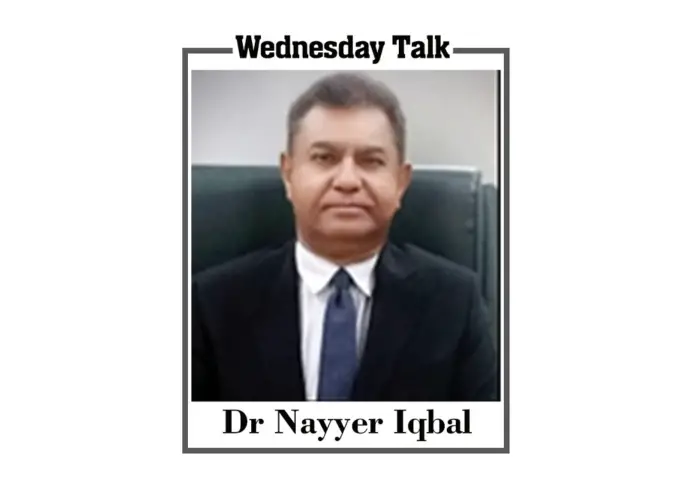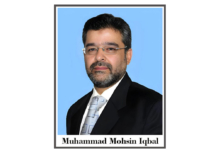Before focusing on the September 2023, G20 Summit in India it seems appropriate to have a look on the background and nature of this organization. Actually, it is one of the largest economic forums in the world comprising of 19 most advanced economies and the European Union, representing 90% of global GDP, 80% of international trade and 2/3 of human population. It was initially formed in 1999 as a platform to discuss international economic-cum-financial issues at Finance Ministers and Central Bank Governors stage, however, in the wake of 2007-global monitory crisis it was upgraded to the summit level. The objectives of G20 are; (i) Policy co-ordination between the member-states to attain stable and sustainable world-wide economic growth; (ii) Promotion of financial regulations that may reduce risk and forestall any financial upheaval in future; and (iii) Development of a fresh financial frame-work. The Group does not have a permanent secretariat and its affairs are managed by a ‘Troika’ comprising of the previous, current and future holders of presidency which are presently Indonesia (2022), India (2023); and Brazil (2024).
The presidency of G20 for 2023 was handed-over to India on OI December, 2022 at the end of Bali Conference and will remain with it till 30 November. This distinction has come to India for the first time since the inception of G20 in 1999.The 43 Heads of Delegations, the largest ever in G20’s history, will attend the New Delhi Summit in September, 2022. Harsh Vardhan Shringla, the ex-Foreign Secretary of India, has been nominated as the Chief Co-ordinator for India’s G20 Presidency in 2023. The 19 member states: Argentina, Australia, Brazil, Canada, China, France, Germany, India, Indonesia, Italy, Japan, Republic of Korea, Mexico, Russia, Saudi Arabia, South Africa, Turkey, United Kingdom, and United States; and the European Union will participate. 09 countries: Bangladesh, Egypt, Mauritius, Netherlands, Nigeria, Oman, Singapore, Spain and UAE will join as special guests. The most effective international organizations; UN, World Bank, IMF, WHO, FSB, WTO, ILO, OECD, AU (Chair), NEPAD (Chair), ASEAN (Chair), ADB, ISA, and CDRI will also be engaged.
The prime issues to be discussed in the G20: Summit-2023 will be the ongoing effects of the Ukraine-Russia war, an escalating global energy crisis, economic slow-down, a re-surging COVID-19 risk, and the fast aggravating global warming. Other areas of focus will be women empowerment; technology-enabled health and education; agricultural boost to ensure food security; culture and tourism; energy availability; disaster risk reduction; development co-operation and war against economic crimes.
India has made unprecedentedly grand preparations for the Summit and it is all set to show-case India’s economic growth as well as its rich cultural heritage. It is after almost 40 years, when India hosted NAM and Commonwealth that it is putting-together for an international conference. India also takes upon itself to play a crucial role in building upon the significant achievements of previous 17 presidencies. To add a flavor of universality, ‘Vasudhaiva Kutumbakam’ (One Earth, One Family, One Future) has been declared the theme for India’s presidency. Political analyst Seema Guha in ‘Outlook’ dated 01 January, 2023 commented that all the optics aside, ‘very little of such noble sentiments have been at play in domestic issues’ rather ‘the emphasis of the larger Hindutva fold has been on majoritarianism, vigilante killings, and selective targeting of people with different views’. New Delhi is also propagating that ‘India’s G20 is not merely a diplomatic meeting’; actually India is ‘being courted by the international community in the backdrop of an aggressive China’ apart from being respected as largest democracy and recognized as a fast emerging economy.
Prime Minister Narandra Singh Modi, being an astute leader, has planned to exploit the occasion fully for his political benefit. He has scattered the G20 events through the length and breadth of India instead of concentrating them in the capital New Delhi or the prime metropolitan cities. More than 200 meetings have been scheduled across 50 Indian towns to be held during 2023. These meetings will involve civil society as well, apart from official functionaries. The year-round series of occasions kicked-off with the meeting of ‘Finance and Central Bank Deputies’ (FCBD) at Mumbai from 13 to 15 December, 2022 where-in India’s G20 ‘Finance Track Agenda’ was cleared. It was later followed by Finance Ministers conference in February and Foreign Ministers meeting in early March. The political observers view that if utilized intelligently, the timing of the high-profile Summit, ahead of India’s general elections due in 2024, could help bolster Modi’s electoral position to a considerable extent.
India is really excited regarding the upcoming G20 Summit however it is yet to be witnessed that how smoothly it will sail through it? The world is deeply divided over the issue of Ukraine-Russia War and any point of difference among the participants has the potential to embarrass New Delhi. The Indians are confident that they can handle any situation due to their close relations with both the sides i.e. the U.S. – led west and the Russia-China block, however there are many slips between the cup and the lips. The wrangling over Russia’s condemnation during the Finance Ministers conference in February and repetition of the same in Foreign Ministers meeting in early March was an eye-opener. To wriggle-out of the tricky situation, India will try to keep Ukraine-issue in low profile and let other subjects like alleviating poverty and climate financing to dominate the proceedings. The success of this stratagem is doubtful as numerous analysts have indicated that it will be on the top of the agenda. Parallel to it, the Sino-American relations are particularly tense due to shooting-down of a suspected spy balloon by the U.S. on 4 February apart from continuous disagreement on Taiwan’s status. The situation becomes even more complex due to another reason also: on the one side it has serious issues with China and on the other it is a major buyer of Russian arms and has increased magnitude of oil imports.
The last word: Modi government has to walk on a tight rope till the culmination of G20: Summit- 2023 as the domestic and international stakes are huge.







